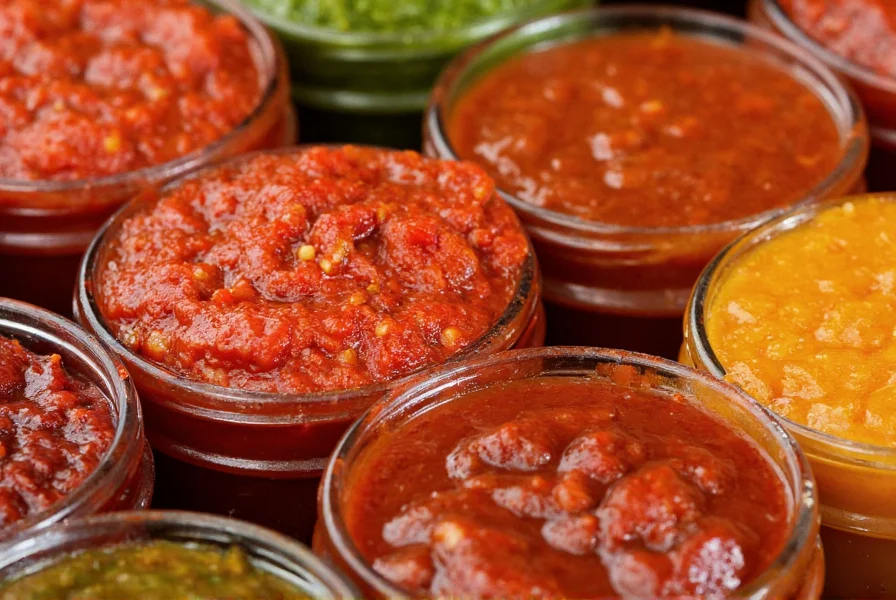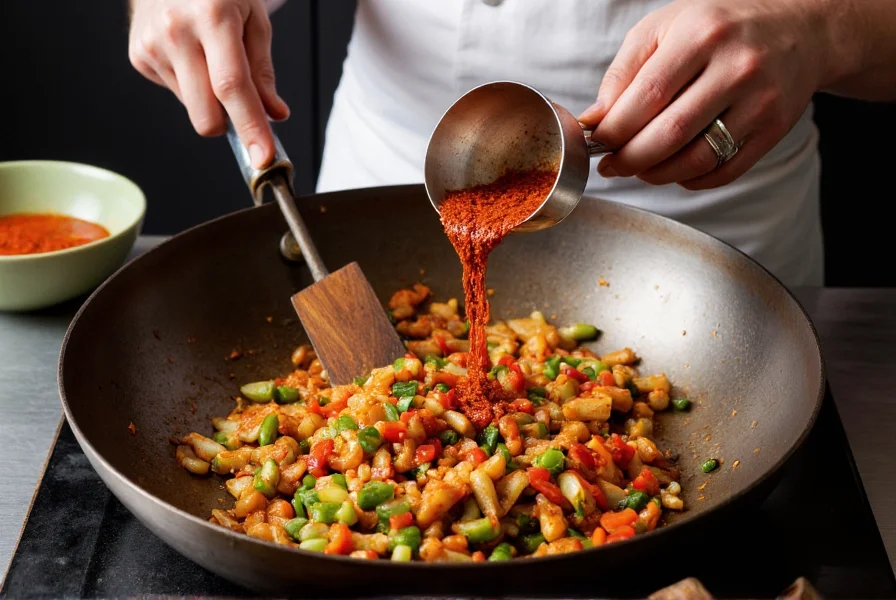When exploring the world of chili pepper paste, you'll discover a diverse range of options that transform ordinary dishes into extraordinary culinary experiences. These fermented or fresh preparations provide not just heat but complex umami, sweetness, and tanginess that fresh chilies alone cannot deliver. Understanding the different varieties and their proper applications can significantly elevate your cooking.
Major Types of Chili Pepper Paste Worldwide
Chili pepper pastes vary dramatically across cultures, each with distinctive ingredients and production methods. The most prominent varieties include:
| Type | Origin | Key Ingredients | Heat Level | Signature Dishes |
|---|---|---|---|---|
| Gochujang | Korean | Fermented soybeans, glutinous rice, red pepper flakes | Moderate (with sweet undertones) | Bibimbap, Tteokbokki, Bulgogi marinades |
| Sambal Oelek | Indonesian | Fresh red chilies, vinegar, salt | High (clean chili flavor) | Nasi goreng, Satay dipping sauce |
| Doubanjiang | Chinese | Fermented broad beans, chili peppers, salt | Moderate to High | Mapo tofu, Kung Pao chicken |
| Nam Prik Pao | Thai | Chilies, garlic, shallots, shrimp paste, tamarind | Moderate (sweet & savory) | Stir-fries, noodle dishes, dipping sauces |
Understanding Flavor Profiles and Applications
Each chili pepper paste brings unique characteristics to dishes. Korean gochujang offers a complex blend of sweet, spicy, and umami notes due to its fermentation process, making it ideal for marinades and stews. When substituting gochujang in Korean chili pepper paste recipes, consider adding a touch of sugar to balance the flavor profile.
Indonesian sambal oelek vs chili garlic paste presents an important distinction for Southeast Asian cooking. While both originate from Indonesia, sambal oelek contains only chilies, salt, and vinegar, delivering pure chili heat, whereas chili garlic paste incorporates significant amounts of garlic for additional flavor complexity. This difference significantly impacts dishes where authentic flavor matters.

Practical Cooking with Chili Pepper Paste
When incorporating chili pepper paste into your cooking, consider these professional techniques:
- Bloom in oil: For Chinese doubanjiang and similar bean-based pastes, stir-frying in oil for 1-2 minutes before adding other ingredients unlocks deeper flavors
- Balance acidity: Many chili pastes benefit from a splash of rice vinegar or lime juice to brighten heavy dishes
- Marinate wisely: Gochujang works exceptionally well as a meat tenderizer when used in marinades for 2-4 hours
- Build layers: Add chili paste early for infused heat, or later for brighter, more pronounced chili flavor
For those wondering how to use chili pepper paste beyond traditional applications, consider these innovative approaches:
- Mix with mayonnaise for spicy sandwich spreads
- Stir into soups and stews for instant depth
- Add to salad dressings for complex heat
- Blend with honey for glazes on roasted vegetables
- Incorporate into deviled eggs or dips for party snacks
Storage and Shelf Life Considerations
Proper storage significantly extends the usability of chili pepper paste. Commercial varieties typically remain good for 6-12 months refrigerated after opening, while homemade versions may last 2-3 months. For optimal preservation of homemade chili paste, store in airtight containers with a thin layer of oil on top to prevent oxidation.
When your preferred variety runs out, understanding chili bean paste substitute options becomes crucial. For doubanjiang, a mixture of miso paste, soy sauce, and crushed red pepper can work in a pinch. For sambal oelek, finely minced fresh chilies with vinegar and salt provides the closest approximation. However, these substitutes won't replicate the complex fermented flavors of authentic preparations.

Avoiding Common Mistakes
Many home cooks make critical errors when working with chili pepper paste that compromise their dishes:
- Adding too much too soon: Start with 1 teaspoon and adjust gradually, as heat intensifies during cooking
- Misunderstanding regional differences: Using Thai chili paste in Korean recipes creates flavor dissonance
- Improper storage: Leaving paste at room temperature accelerates spoilage and flavor degradation
- Not accounting for salt content: Many commercial pastes are quite salty, requiring adjustment of other seasonings
Understanding the difference between chili paste and chili sauce prevents recipe failures. Pastes are thicker, more concentrated, and often fermented, while sauces typically contain more liquid and vinegar, making them better for finishing dishes rather than cooking into them.
Creating Authentic Flavor Experiences
For those pursuing authentic international cuisine, selecting the right chili pepper paste makes all the difference. When preparing Korean dishes, seek out gochujang with fermented soybean content rather than cheaper alternatives heavy on sugar. For Sichuan cooking, authentic Pixian doubanjiang with its distinctive brick-red color and complex aroma is irreplaceable.
When exploring authentic Thai chili paste recipes, note that nam prik pao contains shrimp paste, making traditional versions unsuitable for vegetarians. Many specialty Asian markets now offer vegetarian alternatives that maintain the essential flavor profile without animal products.
Frequently Asked Questions
What's the difference between chili paste and chili sauce?
Chili paste is thicker, more concentrated, and often fermented, containing primarily ground chilies and minimal liquid. Chili sauce typically has more vinegar, sugar, and other liquids, resulting in a pourable consistency better suited for finishing dishes rather than cooking into them. The difference between chili paste and chili sauce significantly impacts how each should be used in recipes.
How can I substitute gochujang if I don't have it?
For Korean chili pepper paste recipes requiring gochujang, combine 1 tablespoon doenjang (Korean soybean paste) with 1 teaspoon red pepper flakes, 1 teaspoon sugar, and 1 teaspoon rice vinegar. This mixture approximates gochujang's sweet, spicy, and umami profile, though it lacks the depth of authentic fermented gochujang.
How long does chili pepper paste last in the refrigerator?
Commercial chili pepper paste typically remains good for 6-12 months when refrigerated after opening. Homemade varieties last approximately 2-3 months. Always check for signs of spoilage including mold, off odors, or significant color changes. For optimal storage of homemade chili paste, keep it in an airtight container with a thin layer of oil on top to prevent oxidation.
Can I make my own chili pepper paste at home?
Yes, you can create simple chili pepper paste by blending 1 cup fresh red chilies (stemmed), 3 cloves garlic, 1 teaspoon salt, and 2 tablespoons vinegar until smooth. For fermented varieties like doubanjiang or gochujang, the process requires weeks or months of fermentation with specific ingredients and conditions that are challenging to replicate at home without proper equipment and expertise.











 浙公网安备
33010002000092号
浙公网安备
33010002000092号 浙B2-20120091-4
浙B2-20120091-4